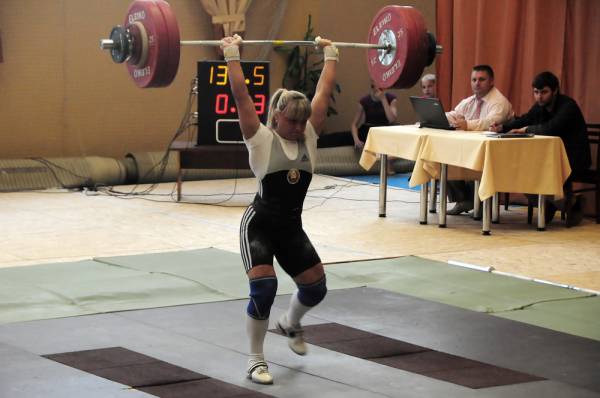This month’s topic is a part of coaching and as such, some attention should be devoted to defining the task of coaching, what it is, and briefly what it is not.
For years I’ve been watching individuals who consider themselves coaches in a variety of activities feel that their primary function should be to provide motivational support for athletes during practice, training, and competition. They feel that the emotional support is the most critical issue and in some cases the only issue. Little attention is given to effective teaching or to long-term development.
Coaching should be a process where an individual is taught to perform certain skills, and then the body is conditioned to perform those skills under more challenging circumstances in the competitive arena. Some sports require individual efforts, while others take place within a team context. In either case the visual feedback of the training and performance is an indicator of the effectiveness of the coaching that has taken place.
Visual Development
The visual cortex of the brain largely develops according to usage, and in my experience those individuals with a background in drawing and painting are particularly adept at spotting certain types of figures, images, or movements. Some of the best coaching eyes I’ve ever been around belonged to individuals who were adept at sketching and drawing. This is not to say you must become an ardent sketcher to embark on a coaching career, but merely to point out the relationship between visual acuity in one area and its relationship to coaching.
I do, however, recommend that aspiring coaches spend some time around veterans with a good coaching eye in order to get an idea of what they see and what they look for. This will do much to target the areas in need of development.
Watching Weightlifting
If you aspire to become a weightlifting coach there is no shortcut to gaining the visual acuity that is so valuable. You simply must view a large number of lifts, both well executed and not so well executed. There is something about live viewing that differs from watching video. I can’t define it, but there is some difference in the timing between the two.
Before watching, however, I would recommended studying sequence photos of technically well performed lifts. They should be readily accessible on the Internet. By studying the positions a lifter’s body passes through during the course of execution, you get an idea of what the lift should look like at certain critical points. From this preparation you can then go to watching live lifts and trying to observe whether or not these points are properly achieved or executed.
Further study of videos will allow the coach to repeatedly watch a lift and then learn to see the subtle differences that take place at a speed and not easily discernible at first glance. The goal is to be able to see all the details that go into the performance of the lift at a single viewing, which is what takes place in real time during a competition or training session.
Watching in Competition
 In competition, there is often no time to resort to watching video, and so a coach must determine if there is a technical error, as well as the cause of that error, and then suggest a remediation to the athlete. This all takes place within seconds, especially if the lifter is following him- or herself in the competition. There is no opportunity to second-guess either, else the confidence of the athlete may be affected.
In competition, there is often no time to resort to watching video, and so a coach must determine if there is a technical error, as well as the cause of that error, and then suggest a remediation to the athlete. This all takes place within seconds, especially if the lifter is following him- or herself in the competition. There is no opportunity to second-guess either, else the confidence of the athlete may be affected.
To learn how the coach uses the coaching eye, you should stand next to an experienced coach at a serious competition and try to see what he or she is seeing. You can tell a great deal by what he says to his or her athlete immediately before or after a lift. It might even be better if you can listen in on the whole warm-up process as well. A top-level coach’s mind is attuned to different things and the visual input he or she receives is what cues those processes.
Watching Technically Proficient Lifters Train
Watching elite level athletes is another part of the learning process. They are quicker and more precise. The technical variants are smaller. You might be able to see technical faults in local level lifters, and miss them altogether when you get to observe them in elite lifters. Again, if you can watch training sessions while listening to the comments of an experienced coach, the learning will be that much easier.
Elite level lifters are extremely precise, and small changes in technique and speed of movement and execution are indicative of fatigue. This may or may not be desirable at the given point of training, so these tiny variations are good indicators of the efficacy of the training program design.
 When I have coached a lifter for several years, I can tell if the speed is appropriate for 80% weights at the given stage in the training cycle. If the speed is off, I know that I need to make adjustments in the training load or intensities. This is another aspect of the coaching eye. It can help to determine the appropriateness of the training program design for the present cycle.
When I have coached a lifter for several years, I can tell if the speed is appropriate for 80% weights at the given stage in the training cycle. If the speed is off, I know that I need to make adjustments in the training load or intensities. This is another aspect of the coaching eye. It can help to determine the appropriateness of the training program design for the present cycle.
Conclusion
The coaching eye is a valuable tool that good coaches develop through watching hundreds of thousands of lifts performed by proficient athletes. Coaches should know what they are looking for and be able to spot deviations immediately. Furthermore, the coaching eye can aid the coach in determining the effectiveness of the training program design and how to make appropriate modifications. There is simply no way to progress as a weightlifting coach without putting sufficient time into the development of this very valuable tool.
Photos courtesy of Shutterstock.






